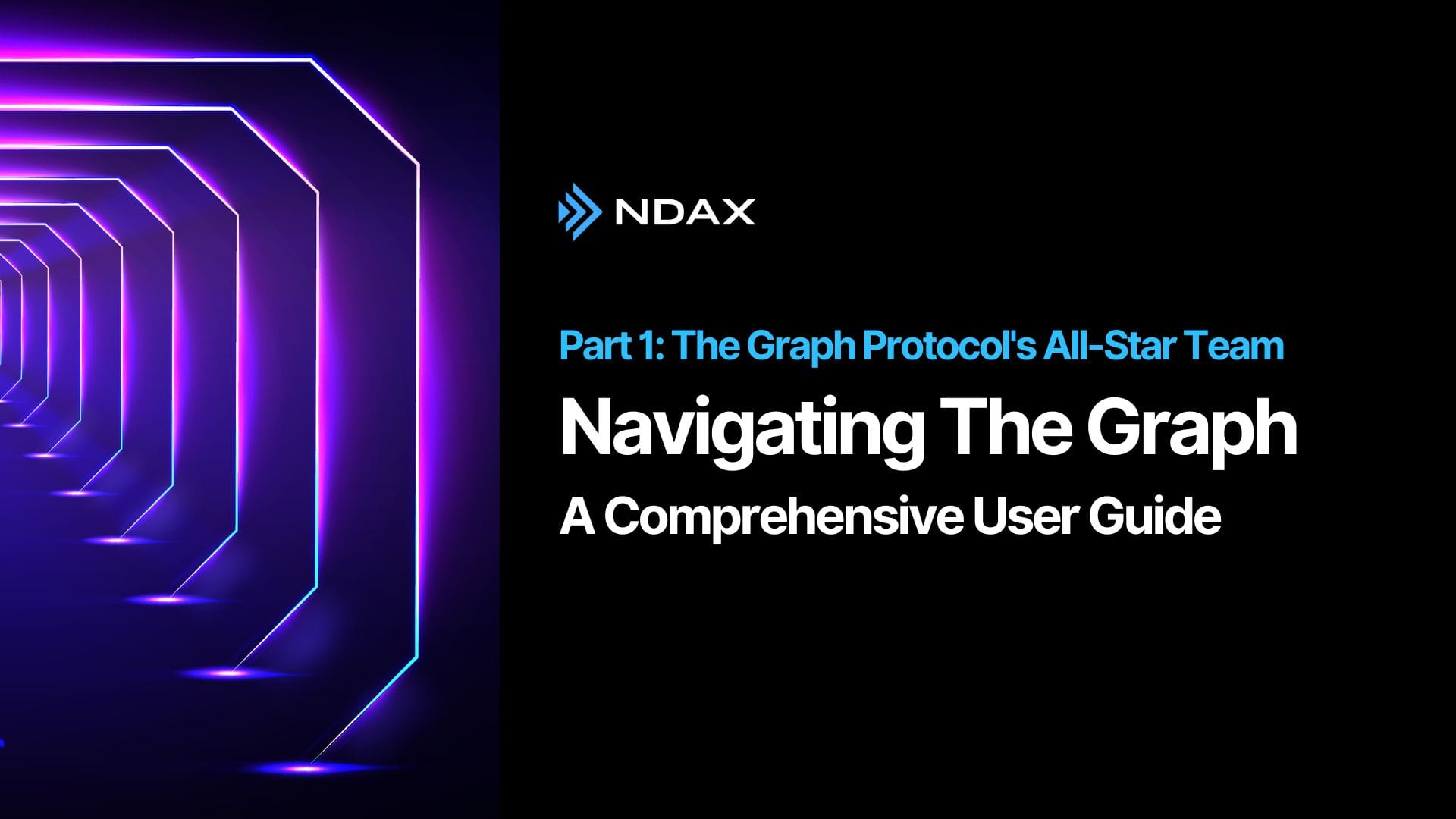Navigating The Graph: A Comprehensive User Guide - Part 1

Often referred to as the "Google of Blockchain," The Graph is an impressive and revolutionizing decentralized protocol that has captivated users worldwide. Not only a groundbreaking cryptocurrency, it also provides us with a glimpse into the future of complex digital interaction. Launched in 2018 by Yaniv Tal, Jannis Pohlmann, and Brandon Ramirez, The Graph has been setting the stage for transforming blockchain utilization and accessibility.
This guide will help you navigate through The Graph's prospects, its innovative projects, and prominent investors, passing by its robust development community. We observe it through the looking glass of its real-world applications and use cases. Let's demystify this remarkable advancement in blockchain technology together.
Understanding The Graph
So, what's The Graph hype all about? Simply put, it is a decentralized protocol for indexing and querying blockchain data. It operates on top of existing blockchains like Ethereum and IPFS, allowing developers to build and publish open APIs that applications can query using GraphQL. This unique technology facilitates unprecedented data accessibility and enhances the overall efficiency of the blockchain ecosystem.
The Graph's magic lies in the elegant design of its protocol architecture, which distills complex data management tasks into easy-to-handle assignments. When a decentralized application (dApp) needs certain pieces of information from the blockchain, it sends a request to The Graph. This protocol then collaborates with its network of 'nodes'—each performing its own role—to execute the query efficiently.
Let's say you're running an app that helps users track all transactions in a specific Ethereum smart contract. Without The Graph, your app would have to sift through every block on Ethereum, individually checking whether each transaction involves the smart contract or not—that's cumbersome! But with this protocol, Your app just submits a simple command, like asking for "all transactions involving Smart Contract X." And voila! You get your answer.
The Graph Protocol's All-Star Team
Every participant in the ecosystem dons a hat–carrying out specific core roles that keep the protocol running smoothly. These 'team members' make the project possible, resulting in robust and efficient data management.
Indexers
At the forefront of the ecosystem are indexers – sturdy pillars (or nodes) holding up The Graph's magnificent structure. These participants use their specialized systems to process queries and store data from various blockchains connected to The Graph.
Indexers come into play when a query needs to be processed. They stake their acquired GRT tokens in exchange for query fees and indexing rewards. This staking signifies their reliability and quality service commitment - penalties may be imposed on their staked tokens if they fail to fulfill these.
Delegators
Delegators are essentially individuals or entities that contribute by staking their GRT tokens to support the network. They do not directly participate in indexing or querying but support those who do – the indexers. With this supportive role, delegators do not have to actively participate in maintenance activities. Instead, they share a portion of their token holdings with an indexer, granting them more power within the network's ecosystem. Consequently, the compounded capacity enables faster and more effective handling of queries made on The Graph.
While delegators don't shoulder the technical responsibilities, they share in the rewards (and penalties) depending on their chosen indexer's performance. This passive participation option provides an opportunity for those exploring blockchain advancements without delving into complex operational roles.
Curators
Then we have curators, experts with deep domain knowledge who point out which APIs (referred to as "subgraphs") hold valuable data. They signal this using GRT tokens on different subgraphs indicating which ones are likely to be valuable or accurate. When an API has more signals, more indexers will select it for indexing.
Curators are vital actors who maintain data relevancy and value within the system, ensuring that reliable information is channelled through quickly and efficiently.
Developers
The final "worker" in the team is the developer. They are architecture designers creating subgraphs. A developer's work makes it easier for dApps to find useful blockchain information without manually scanning blocks or contracts by architecting APIs that lead straight to specific sets of valuable blockchain data.
Consumers
Naturally, all this hard work ends up serving the paying customers. These are the end users that pay a fee to make requests on the protocol—whether they are traders looking for insight into cryptocurrency prices or developers in need of blockchain data to power their new dApp.
In essence, each role is integral to keeping the wheels turning smoothly for efficient performance.
What is the GRT Token?
A protocol is efficient when its backbone, the native token, seamlessly interconnects all moving parts. For The Graph, that's the GRT token. This cryptocurrency—essential for the continuous operation of the ecosystem—is a work token that provides economic security to the network while acting as the unit of exchange for services within it.
Each role in the multifaceted ecosystem utilizes GRT tokens differently:
- Indexers stake GRT tokens as collateral, signalling their readiness to process queries and index data honestly. As discussed earlier, this stake is at risk if an indexer fails in its duties.
- Delegators contribute to network security by delegating their GRT to trusted indexers, thus aiding them with increased query processing power and capacity.
- Curators deposit GRT tokens on worthwhile subgraphs and help ensure superior quality of indexed data without being drowned by a sea of information.
- Developers use subgraphs and pay "query fees" using GRT for the privilege.
- Consumers pay GRT fees for the privilege of querying subgraphs.
In addition to serving these specific functions, one cannot overlook the GRT token's integral role in providing governance rights. As a decentralized protocol, The Graph relies on its community members to vote on key protocol decisions—everything from fee structures to network upgrades—and these votes are weighted by GRT holdings.
While its practical uses within The Graph are appealing in themselves, if wider adoption ensues (and we hope it will), there's also potential for growth in value for these tokens.
Use Cases and Applications
The Graph, undoubtedly, extends beyond its intricate network of Delegators, Indexers, Curators, and Developers orchestrated around GRT tokens. Its entire framework points towards facilitating a more accessible decentralized digital experience. Understandably so, its complex concept might be challenging to grasp initially. To really understand its prowess and potential, it helps to examine real-world uses and applications.
Indexing Blockchain Data
One of the paramount uses of The Graph is indexing blockchain data. This game-changing functionality enables developers to sift through vast amounts of data from various blockchains effortlessly, promoting faster data retrieval. The Graph simplifies this by acting as a full-fledged indexing system—an organized catalog for the massive blockchain library that empowers your decentralized applications (dApps).
When a dApp selects a subgraph created by a developer, the Indexers gather the requested data to assemble an easy-to-understand response. As subgraphs exist for all sorts of information—from crypto wallets to smart contracts—developers can pull up any data they need from any corner of Ethereum or IPFS.
This promotes systematic data storage and retrieval and saves users from maintaining large database infrastructure on their own.
Find out more on what makes the Graph so unique in next week's instalment.
Don't forget to follow us on social media for more updates and join the conversation on our forums.
Disclaimer: This article is not intended to provide investment, legal, accounting, tax or any other advice and should not be relied on in that or any other regard. The information contained herein is for information purposes only and is not to be construed as an offer or solicitation for the sale or purchase of cryptocurrencies or otherwise.

